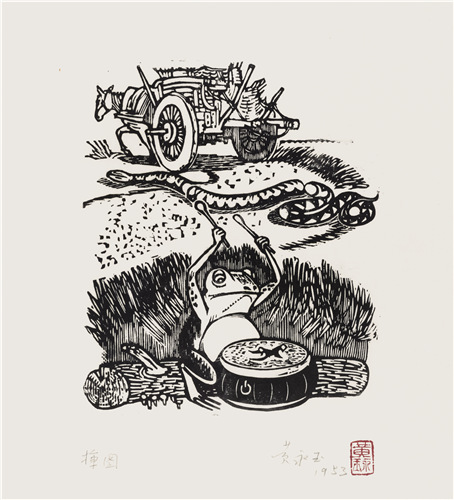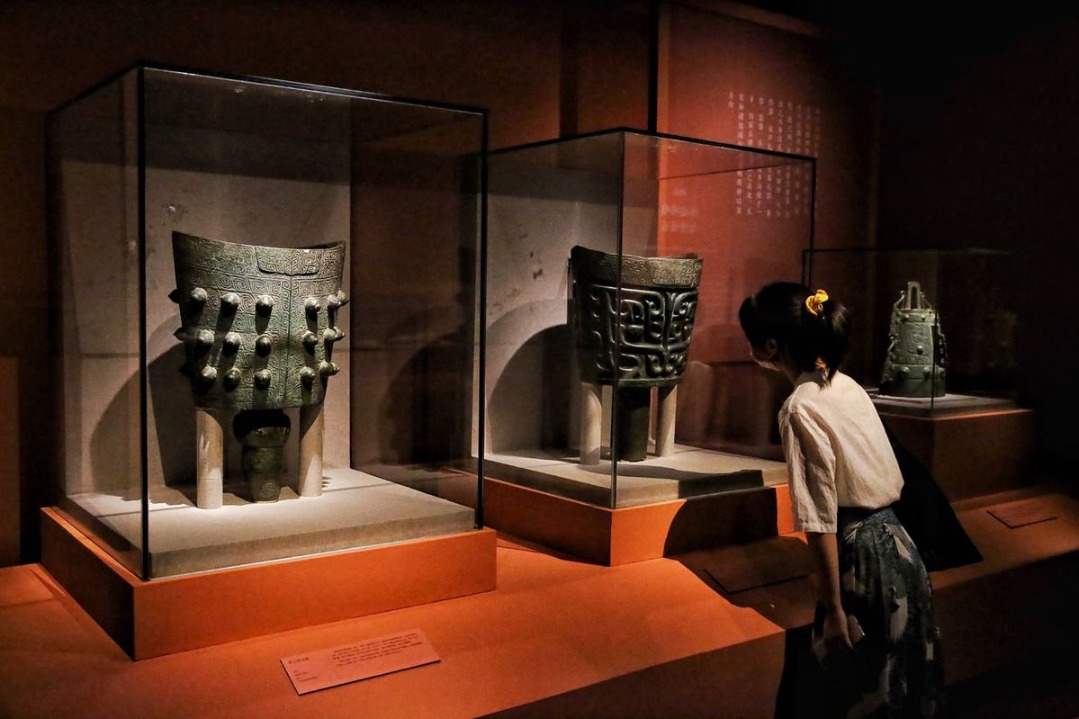Artistic impressions
By Lin Qi | China Daily | Updated: 2020-09-03 07:25

"During the war, when I heard guns and explosions, I immediately grabbed the backpack and ran for my life," Huang recalls. "I carried these things around, as I moved from one place to another during the War of Resistance Against Japanese Aggression (1931-45) and throughout the decades afterward.
"I have never parted with them, they are like my bones. They document part of my history."
Huang says his art, the same as his literary work, is inseparable from the native culture of his birthplace, "an inexhaustible source" of inspiration for him.
Huang grew up in the ancient town of Fenghuang, which is now a county in Hunan province, known for its distinctive, well-preserved historical appearance and diverse ethnic cultures. A member of the Tujia ethnic group himself, Huang was nurtured by the dynamic arts and cultures of the Tujia and Miao groups inhabiting Fenghuang.
The strong impression of his hometown allows him to make works such as Miao Dance-one of the pieces on show at the exhibition-a print depicting a dancing Miao girl. The vivid details of the girl's ethnic outfits reflect a sense of homesickness and nostalgia that have accompanied Huang since he left Fenghuang.
The wealth of China's ethnic cultures also motivated Huang to produce his signature Ashima series comprising 10 colored prints, which are also on display.
Huang traveled to Yunnan province in 1954. During his two-month stay there, he heard a variety of folk tales. Among them, the one that touched him the most was Ashima, a long narrative poem passed down among generations of the Sani people, part of the Yi ethnic group.
Huang illustrated the tale that centers around Ashima, a beautiful and courageous girl, who fights for freedom against a cruel landlord whose son attempts to marry her against her will. The prints garnered wide acclaim as soon as they came out, and they quickly became collectible.
Huang requested that a section of Forceful Cuts be dedicated to prints inspired by trips to the Daxing'anling and Xiaoxing'anling forests in North China that he took with his late wife Zhang Meixi in the early 1950s. Several of them were created as illustrations for In the Wood, a children's book written by Zhang that was also based on their travels to the area.
After 75 years of marriage, aged 98, Zhang, a children's literature writer, died in May.






















